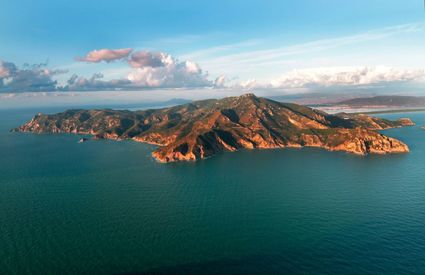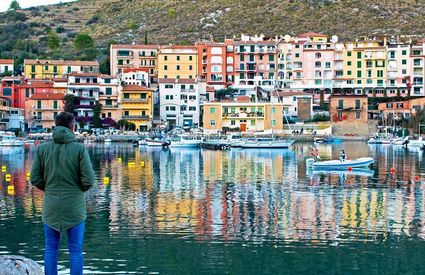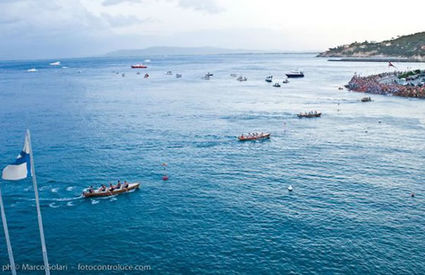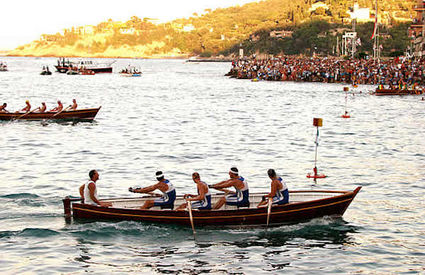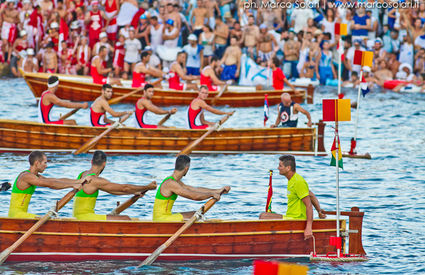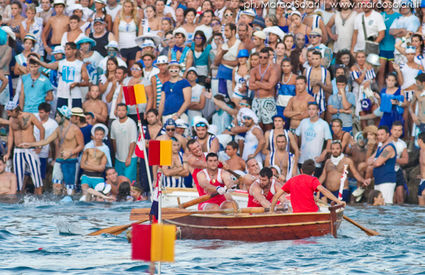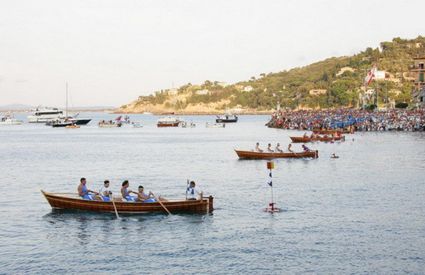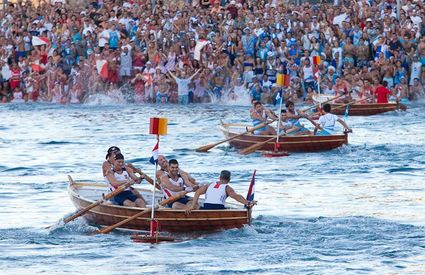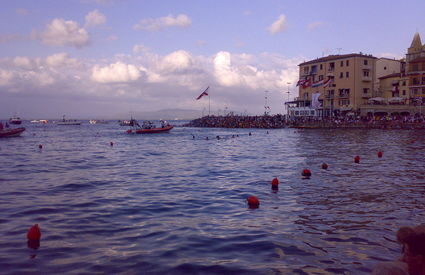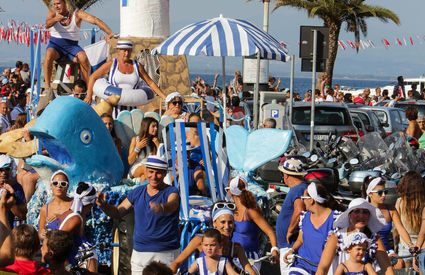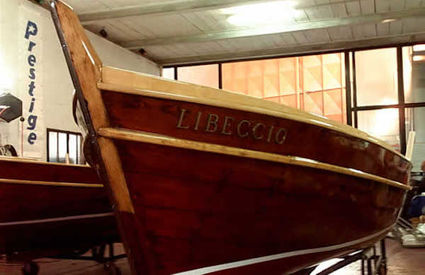Monte Argentario
Fishermen and pirates
Every summer in Porto Santo Stefano, four fishing boats face off in the bluest Palio in existence
Fishermen and pirates
Every summer in Porto Santo Stefano, four fishing boats face off in the bluest Palio in existence
The Grotta del Turco
One day, many centuries ago, a tartarone of Porto Santo Stefano fishermen was attacked by pirates – that sea was periodically infested by surprise visits from privateers and frequent raids along the coasts. Legend says, however, that on that particular day the fishermen had no intention of falling into the pirates’ clutches, and set about rowing furiously. With great exertion, they managed to escape the barbarian boat, leaving it behind as they reached a grotto hidden behind Punta della Cacciarella. From that day forward, that nook became known as the Grotta del Turco.
A theory of rowing competitions
Whatever might have happened that day, the legendary adventure went on to inspired numerous regattas, beginning in the 18th century. These races would take place in the waters of Porto Santo Stefano, where two hands aboard two tartaroni usually chased each other, the first representing the escaping fishermen, and the second, the pirates intent on attack. It’s no coincidence that as early as 1701, Sebastiano Lambardi remembers in his Memorie del Monte Argentario how, for the royal visit of King Philip V of Spain, various “boat races” were organized. Later, in 1886, such rowing competitions were officially inserted into the category of traditional city celebrations.
The stories of these boat races, which were at this time “helmsman-steered four-oared boats”, gradually got richer: the winner would go on to win the tidy sum of 40 lire.
The Palio Marinaro dell’Argentario
The point is that the population of Santo Stefano—those making up its real origin and heart—has always been reflected in rowboat races, fishing traditions, and close-knit relationships with the sea. It was destiny, then, that the centuries-old practice of “cutting” water with oars would become the cornerstone of the town’s major celebration. And this was how the Palio Marinaro dell’Argentario was officially born in August of 1937. Initially the race ran in a line, without any turns, and took place among the four historic districts of the town (Croce, Fortezza, Pilarella and Valle), which would be dragged to the offshore and would later take off toward the port…Over time, the boats changed, the route was modified, with turns added – emphasizing the rowers’ maneuvering abilities. It was like one was added and then over time the route came more and more to resemble the twists and turns of boa constrictors.
The race stopped during World War II, during which time Porto Santo Stefano was shaved off the soil, going on to be reborn and more closely tied to its identity in 1945. The town became inextricably linked—just as the rowers’ clenched fists are to their oars—to the twists and turns of the four identical boats that compete in this nautical merry-go-round each year. Since 1990, a magnificent demonstration has taken place prior to the race, complete with a historic court procession commemorating the age of the Stato dei Presidi and the former Spanish dominion.


